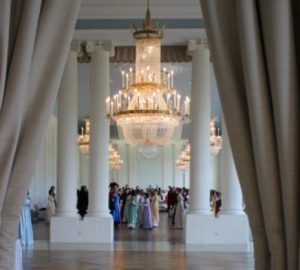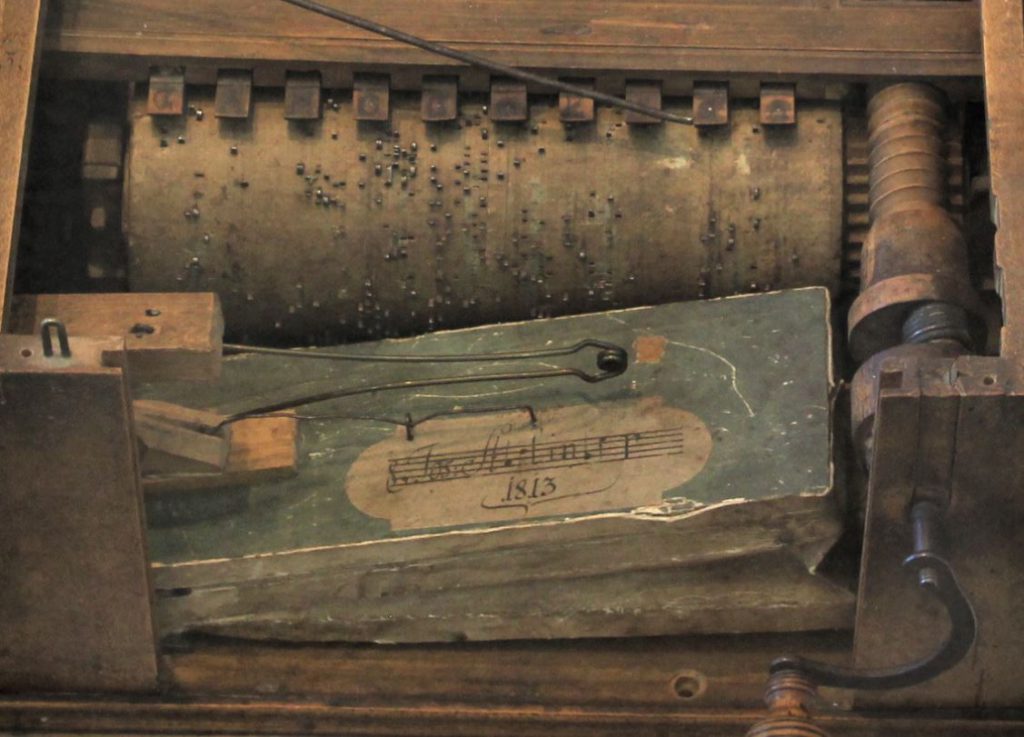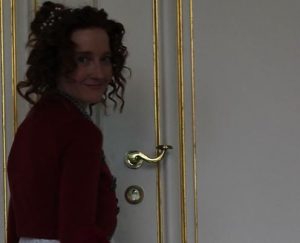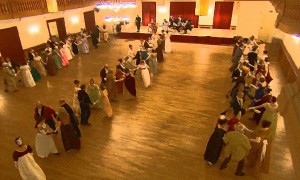 May I have the pleasure of this Waltz? It is the most controversial dance of the Regency Period. That the Waltz was considered scandalous certainly isn’t new to you. But there were more reasons than too much intimacy between the dance partners that made people turn up their noses at the Waltz. Among the despisers was e.g. Lord Byron who can hardly be counted among the moralisers of the age. So what was wrong with the Waltz? Continue reading
May I have the pleasure of this Waltz? It is the most controversial dance of the Regency Period. That the Waltz was considered scandalous certainly isn’t new to you. But there were more reasons than too much intimacy between the dance partners that made people turn up their noses at the Waltz. Among the despisers was e.g. Lord Byron who can hardly be counted among the moralisers of the age. So what was wrong with the Waltz? Continue reading
Object of Interest: The Serinette

Music instruments of the 18th century – the harp and the piano for genteel young ladies come to mind, the violin for young Arthur Wellesley, flutes and pipes for rustic dances. But is that really all that was popular during that time? Well, I came across an interesting piece (see photo) at the section for musical instruments of Deutsches Museum / Munich. It is a type of mechanical musical instrument consisting of a small barrel organ and some pipes. But what exactly is it – a simple music box? There wasn’t a description added to the instrument, but having the year 1813 written on it, it naturally interested me. I did some research and found out more:
Continue readingA Jane Austen Ball in Pictures
 Dancing at a historical ball in a perfect Regency period-setting: my dream of heaven came true a couple of days ago at the Grand Jane Austen Ball in Ansbach/Germany.
Dancing at a historical ball in a perfect Regency period-setting: my dream of heaven came true a couple of days ago at the Grand Jane Austen Ball in Ansbach/Germany.
I have selected some photos of the event for you. Follow me to a splendid night in ‘Regency-Wonderland’. Continue reading
A Writer’s Travel Guide: 10 Facts about the Famed and Famous World of the Theatre
 Going to the theatre was one of the most popular evening pastimes of the Regency period. It offered more than entertainment, laughter and drama: At the theatre, men and women could meet publicly in society, and classes would mix. Seeing and being seen was also part of the entertainment.
Going to the theatre was one of the most popular evening pastimes of the Regency period. It offered more than entertainment, laughter and drama: At the theatre, men and women could meet publicly in society, and classes would mix. Seeing and being seen was also part of the entertainment.
Though the theatre was popular, it was considered morally reprehensible by the conservative or pious. In Oxford, theatre groups were even banned from performing because of their allegedly negative influence on students. Continue reading
Six Reasons Why You Should Take Part at a Jane Austen Ball
 Music fills the ball room. The English chamber orchestra The Pemberley Players strikes up. About 100 persons dressed in historical costumes dance the elegant formations of the opening polonaise, smiling and greeting each other. A glittering ball set in the Regency period begins: We are at the Grand Jane Austen Ball, pretending to have travelled in time back to Regency England.
Music fills the ball room. The English chamber orchestra The Pemberley Players strikes up. About 100 persons dressed in historical costumes dance the elegant formations of the opening polonaise, smiling and greeting each other. A glittering ball set in the Regency period begins: We are at the Grand Jane Austen Ball, pretending to have travelled in time back to Regency England.
Making a Gown for a Jane Austen Ball
 The Museum of Creativity proudly presents “An Empire-Style Ball Gown Based on 21th Century Clothes”.
The Museum of Creativity proudly presents “An Empire-Style Ball Gown Based on 21th Century Clothes”.
“I cannot determine what to do about my new Gown”, Jane Austen once wrote to her sister Cassandra. This is a feeling many of us can sympathize with. If you are going to attend a ball set in the Regency period, figuring out what to wear, where to get it or how to do it yourself is no easy task.
I am going to go a Jane-Austen-Ball at the end of this month. As I can’t sew, I tried to make the ball gown from everyday clothes I had found in my cupboard. But halfway through roughing out a concept for a modest white cotton gown, I stumbled upon a dazzling beautiful red lace in an oriental drapery. Though I knew perfectly well that I haven’t the sewing skills to handle the lace, I bought it. Continue reading
Anna and the Mystery of the Triple Minor (part 2) – Free Music Download of “Lady Caroline Lee’s Waltz”
In this post:
- Dance instructions for “Lady Caroline Lee’s Waltz” for you to perform and enjoy
- Free music download: “Lady Caroline Lee’s Waltz” (mp3)
- Free music sheet for “Lady Caroline Lee’s Waltz”
Dear Regency Enthusiast
as promised, here is my post with dance instructions and a free mp3 soundfile for “Lady Caroline Lee’s Waltz”.
Lady Caroline Leigh was a distant relative of Jane Austen. Her son James Henry was a second cousin to Jane. It is easy to imagine that the “Lady Caroline Lee’s Waltz” was danced as part of the evening entertainment when Jane visited James Henry. The music sheet for the “Lady Caroline Lee’s Waltz” was part of Jane Austen’s library. It is, however, still the status quo of the Austen-research to have solely proven she danced the boulangère, and I don’t want to imply anything else.
Dance instructions for “Lady Caroline Lee’s Waltz” for you to perform and enjoy Continue reading
Anna and the Mystery of the Triple Minor (Part 1)
In this post:
The truth about longway dances of Jane Austen’s time
How to perform a longway dance in a historically correct way
Tips for depicting a ball in your novel
Preview: Dance instruction and music to come in part 2
Dear Regency Enthusiast
A couple of weeks ago I took part in a workshop in Old English Country Dances*. First-hand experience of the culture and techniques of the regency era can be very enlightening for writers (see my post on Five Methods of Research). Indeed I came across very helpful facts – and a dark secret of contemporary country dance teaching. Fancy that: All the longway dances from Jane Austen’s time are today deliberately taught historically incorrect. Shocking! Why are the dances usually done incorrectly? How were they really performed? And what should you know to when you write a scene with a ball for your novel? Continue reading
